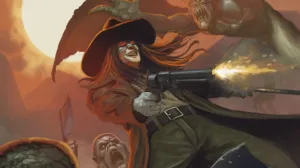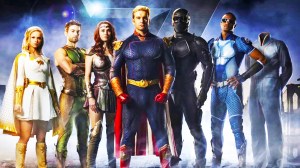
Lois Lane is certain to draw comparisons to another comic (co-)written by Greg Rucka: Gotham Central. There are a variety of superficial similarities. It focuses on familiar supporting characters from one of DC Comics’ most popular franchises, details their mundane line of work, and mirrors Rucka’s sense of pacing from that series. All of these linkages are fair, but the central reason to draw the comparison and why it should be taken as a flattering one is far deeper; Lois Lane is a series about human beings dealing with great powers and complex situations. It never forgets about the humanity of every character on the page, and thus manages to transform the superhero elements into a metaphor for relatable conflicts in our own world.
Videos by ComicBook.com
This is splendidly captured in the first issue, which provides readers with a self-contained story even as it lays out threads for far more ambitious future plots. Lois Lane publishes a story on a child separation policy and detention centers with clear parallels to the story revealed by ProPublica last summer, including a recognizable White House press secretary. This helps assert that the profession of journalism and Lois Lane are powerful independent of any superpowered characters in the wings, a force to be reckoned with in DC Comics and the current American landscape.
Rucka and Perkins don’t glorify or exaggerate the work, though, like the fantasy found in HBO’s The Newsroom. Here the work is purely located in exposing a story with no promises that things will get better. That grounded sensibility is found in characters as well as plotting. While a certain amount of shorthand is used in introducing Lois Lane, Perry White, and some surprises, this is purely to avoid exposition. The behavior, dialogue, and attitudes of these individuals are every bit as complex as one would hope for. Slight pauses, inside jokes, and more all provide loving detail to who these individuals are singularly and to one another.

Perkins’ ability to craft this familiar, grounded world cannot be understated. Throughout the pages of Lois Lane #1 he engages with a variety of genre-based sequences, including romance, espionage, action, and newsroom drama. They all read as being part of a greater whole through a consistent eye for characters and presentation. He offers something of an “uninflected shot,” delivering the moment with very little need to lecture readers on how the page should be read. Askew panels in one action sequence are the closest Perkins come to broadcasting intent, but even there he delivers events clearly and allows his work to speak with minimal hand holding. Characters are drawn with just the right level of detail, body language and facial emotions are clear, but never overwrought.
This visual presentation is what creates something of a reset in Lois Lane and Superman’s power dynamics. Both in a steamy, romantic sequence and on a morning date, they are made to appear as a normal couple with a well-balanced dynamic. Superman still carries his bulk, but is not exaggerated beyond belief. This allows Lois to take the upperhand in the internal power dynamics, no matter what their respective gym routines might look like; it is a wonderfully realized, nuanced relationship. It is an essential element as Rucka touches upon gendered power at multiple points, laying the groundwork for it to become a key theme as the series progresses.

Gender and journalism are ideas sure to be carefully considered in Lois Lane, but the first issue emphasizes one thematic thread above all others: the nature of truth. At one point Lois says, “I don’t mind lying, but I hate being dishonest.” These sorts of distinctions run throughout the book and surface in almost every single conversation Lois has with someone significant in her life. It’s clear that the idea of facts and truth are not so black and white as they might be defined in elementary school, and it’s a gray area between the two in which readers can already witness Lois struggling. There is a need to offer up analysis, context, and secrets, even knowing that the hows and whys behind these questions will rarely be obvious. It’s in this vein of ideas that Rucka and Perkins readily promise that Lois Lane will only expand and improve as it continues.
Lois Lane #1 is a powerful debut and much-needed break from standard superhero tropes. Rucka’s approach to character and Perkins’ clear vision of the world emphasizes humanity and essential questions before ever considering the colorful costumes that fly overhead. There is a connection between this work and very real, very familiar conflicts (and not just in obvious homages to recent journalism). While the series may draw some well-earned and positive comparisons to Gotham Central, it’s clear that Lois Lane is a series with its own unique merits, ones that make it essential reading in 2019.
Published by DC Comics
On July 3, 2019
Written by Greg Rucka
Art by Mike Perkins
Colors by Paul Mounts
Letters by Simon Bowland
Cover by Mike Perkins








